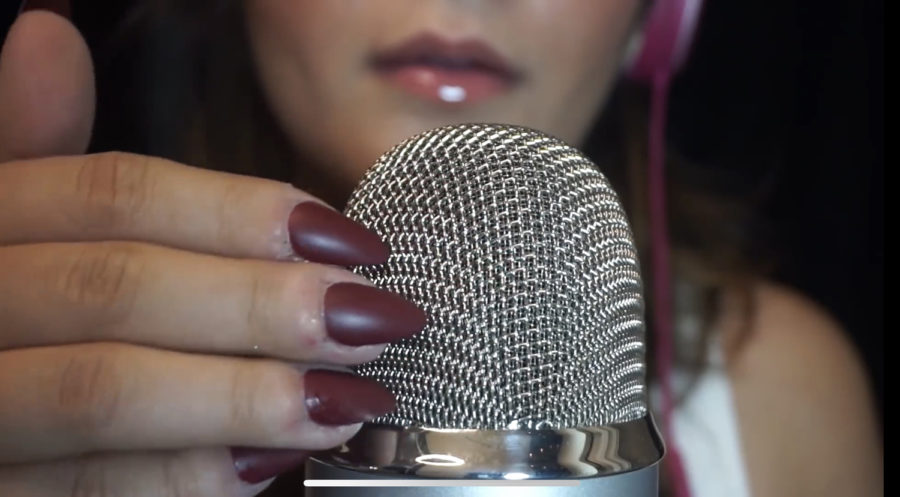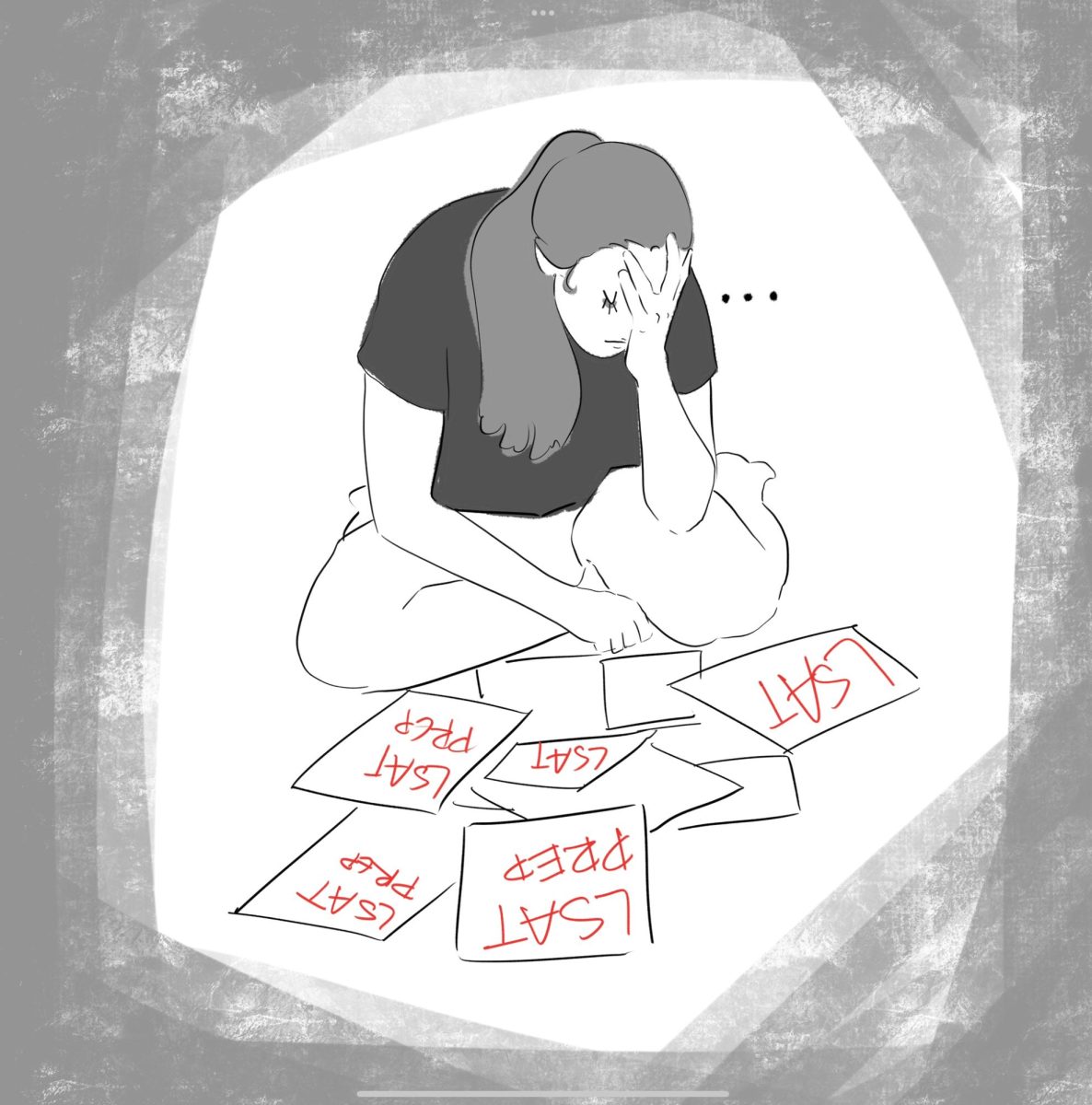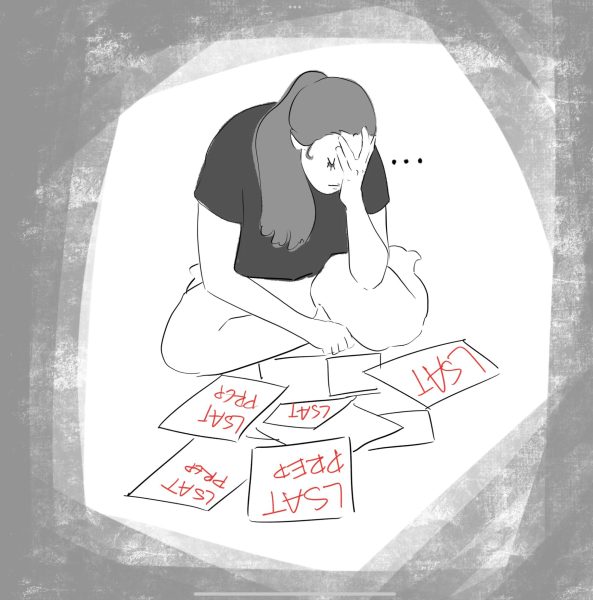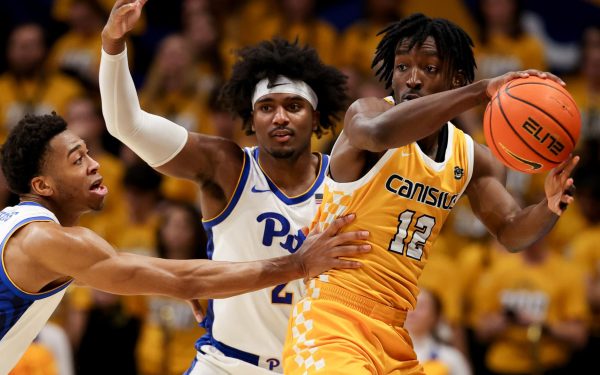Q&A: Local ASMR-tist Lily Whispers talks tingles and YouTube stardom
Pittsburgh native Lilliana Dee taps her acrylic nails on a microphone for an ASMR video on her YouTube channel that has more than 200,000 subscribers.
December 10, 2018
While searching for a Lana Del Rey makeup tutorial on YouTube in 2013, Lilliana Dee came across a new genre of videos that would later change her world — ASMR.
She was a senior in college at the time, stressing out about finals. She had no idea the “makeup tutorial” she was about to watch would decrease her stress exponentially.
Dee, a 24-year-old Pittsburgh native from the South Hills, is now an “ASMRtist” herself, better known online to her 242,000 subscribers as Lily Whispers ASMR. ASMR stands for “autonomous sensory meridian response” and is used to describe the sensation of “tingles” going down one’s scalp and back after exposure to auditory or visual stimuli. The primary purpose of an ASMR video is to provide relaxation to its viewers.
Dee started her channel in 2013, originally with the name Whispers Lily. Her first ever video was an ASMR makeup counter roleplay, in which she pretends to visit a makeup store to take advantage of the different sounds cosmetics cases produce. Since then, she has created more than 500 videos, ranging from beauty roleplays to unsolved mysteries, which have altogether garnered more than 60 million views.
The Pitt News sat down with Dee to learn a bit more about ASMR and the process of making videos.
TPN: How do you define ASMR?
Dee: The way that I like to describe it is if you’re getting ready to go to bed or if you’re really stressed, we all have that go-to thing to calm us down, whether it’s the sound of rainfall or brushing our hair. We all have some type of self-care rhythm that we do to get in the mood for sleep or anti-anxiety. I think that ASMR is a deliberate and intentional escape from reality to provide that type of comfort.
TPN: In ASMR the terms “tingles” and “triggers” are used often. What are they?
Dee: Tingles are the sensation people get when they watch ASMR, and not everybody gets tingles. I like to describe tingles as a warm shiver that starts in your back and your head and makes its way down your spine. It’s supposed to be a very euphoric feeling that’s supposed to emit calmness and inner peace and things like that.
Triggers are the sounds or the visual aspect of content that gives you tingles. A trigger could be the sound of tapping, or rainfall, or brushing sounds. It could be someone putting their hand over the camera, which is one of my favorite triggers.
TPN: What are the different types of ASMR videos and how do they differ from each other?
Dee: It is kind of crazy how much the ASMR community has spread. There’s a whole category for eating shows, known as Mukbangs, and then there’s a whole category for just ear sounds with the cool ear microphones (known as 3Dios). If you think about other [YouTube] communities, there are little niches and smaller communities within them and ASMR is very similar.
TPN: When and how did you find out about ASMR?
Dee: I was a senior in college and I was really stressed out during finals week and I think I had an event coming up so I was trying to do my makeup like Lana Del Rey and then I saw a Lana Del Rey makeup roleplay or something like that. And I was like, “what on earth is this?” I clicked on it, didn’t get it, then watched it with headphones on and was like “oh my goodness this is so relaxing, I feel so at peace, this is amazing.” Then I passed out.
This was almost six years ago and there was almost no literature on ASMR. There was a very small Wikipedia page and a very small Urban Dictionary thing but I had no idea what it was. Then I just fell down the rabbit hole of content after that.
TPN: Had you ever experienced ASMR before finding ASMR videos on YouTube?
Dee: My best friend when we were in elementary school, it must have been first or second grade, was drawing with crayons. The first time I will never forget — I was like, “wow I could just listen to her draw with crayons.” She was also going over the crayons with a brush and it was just so relaxing, I was like, “this is fabulous.”
TPN: Why do people typically watch ASMR videos — what do viewers use them for?
Dee: I love polling my viewers and I ask them why they watch videos, and a lot of them say they just like me. They just like keeping up with me and my life which is so sweet. A lot of them watch it for entertainment and just to relax. Then there’s the portion that watch because they have severe anxiety or depression and loneliness. The majority of the people come back to my channel because they like what I talk about. It’s mainly sleep and anxiety or to get tingles, but there is also the entertainment and personality aspect of it.
TPN: Why do you think ASMR videos are gaining so much popularity now?
Dee: People love discovering new sounds, they love discovering new triggers, they love discovering new content creators, and it’s really profitable. I think that this trend has to do with, to be honest, the money, which I wish wasn’t my answer. I wish that it was just a really cool thing that everyone liked to do, and I do understand that there are people who want to give back to the community and things like that, but unfortunately I do think that the driving factor of a lot of the content is money-based.
TPN: W Magazine has an ASMR series where they have celebrities test out ASMR. What are your thoughts on that? How do you think this exposure is affecting the community?
Dee: I think it’s really cool. W Magazine has been doing it for over a year now, so they’ve kind of been ahead of the trend — before everyone started to do the “I tried ASMR” type videos that you see everywhere. I think it’s cool and brings awareness.
It’s nice to see celebrities are aware of it — like Cardi B. I always like to think of the comments that I used to get when I first started making ASMR videos because people were like, “why are you whispering? This is so fucking weird.” And now people are like, “why are you whispering like that? Why are you tapping like that?” It’s like they’ve all become ASMR connoisseurs and professionals, and it’s so crazy because everyone acts like an expert on the subject now.
TPN: What are your favorite kinds of ASMR videos to create?
Dee: I personally hate making sound-based videos because they’re so boring to film. Like, “ugh here I go, tapping on something for 30 minutes.” When you do roleplays, you get into character. It’s also a very cathartic and therapeutic thing for me in a way because I’m also escaping reality. I’m not Lily Whispers or Lily right now, I can be your babysitter or something else that’s kind of cool. I do love making makeup videos and I am really into those.
TPN: What are some of your more popular videos on your channel?
Dee: The Unsolved Mysteries took off in a way that I never thought they would to be honest. I literally had no idea how it would be received. I remember sitting next to my friend when it launched and being like, “I have this video coming out, I’m super nervous,” and everyone loved it. It was so crazy. I looked into the demographics recently, and I guess true crime buffs are actually young women, and that made sense considering that my demographic is young women.
My makeup videos tend to do the best on my channel and my older sister roleplays do really well. Any type of bestie-, friend- or makeup-related content does really well because I think it’s comforting. Any time I think a video is not gonna do well, it does really well. I filmed a “bitchy” roleplay and people fucking loved it. Everyone found my channel through that video and to this day people are like “Lily oh my god, that’s my favorite video to watch.”
TPN: What is your uploading schedule like? When do you find time to film while working a full-time job?
Dee: Over the summer I was trying to upload every other day and be consistent, but it’s really hard to do. I would love to upload more, but just given I live Downtown and there are sounds and all of that, it’s hard. If you think about the human ear, you can pick up everything. Then you think of the microphone and how sensitive they are — if my neighbor sneezes, chances are I have it on my audio recording.
I know ASMRtists who do it full time and can work all night, but I don’t have the luxury of doing that because I have to be at work in the morning. I usually try to film right after work or later at night. The issue with trying to do it right after work is that it’s rush hour downtown so people are always honking. Now that I have a new studio, it’s not as detrimental to the quality of the video.
TPN: What is the process of creating an ASMR video like?
Dee: The editing and exporting process takes the longest. I think that will take longer than to actually film a 15-minute video. It’s better to try and film ASMR videos in one take because the frequent cuts can be distracting to the viewer but that means you can’t have any distractions or disruptions. So if my bunny, Spooner, is making a noise I’ll have to start from the beginning. As soon as something starts feeling like work, it doesn’t feel fun anymore for me and I’ve always told myself that if YouTube starts to feel more like a job and a duty then I’m not gonna do it anymore — well I’m not gonna not do it, but I’m just gonna need to take a break.
TPN: How do you deal with negative comments?
Dee: ASMR went through a huge uptick in 2016 — Washington Post did an article about it and it just blew up. PewDiePie also mentioned it, so all these people were being really critical and weird. So I found a website for Christian moms and it was a list of all the curse words you could upload to your browser to block any websites with those words on it [and used it for Youtube comments]. When I first started my channel, at school it was really hard. I went to a Big 10 school and was in a sorority and I talk about this a lot, but people were fucking rude.
I got bullied. The app YikYak was really big at the time and people were putting my phone number on there and I was getting texts in the middle of the night. People were calling me and telling me to whisper them to sleep. Kids are mean and they were doing it to be mean.
I just stuck with my girl friends and my close friends and it’s so funny because none of those people have done remotely anything or have had any of the impact on the world that I’ve had because of the ASMR opportunities given to me from things like The Washington Post or The New Yorker. So I guess I’m the one laughing now.








